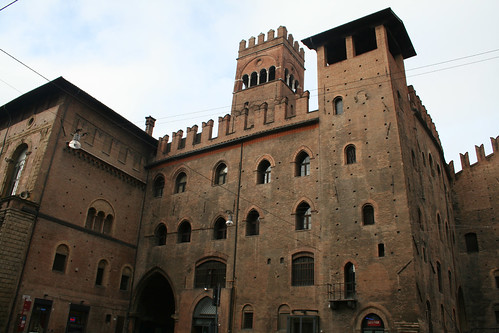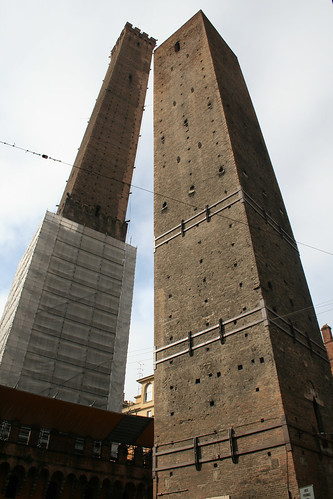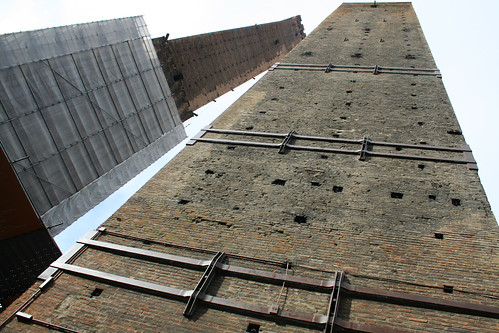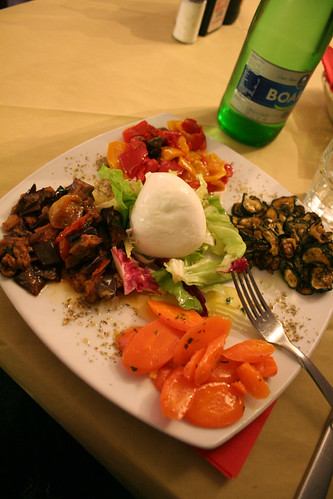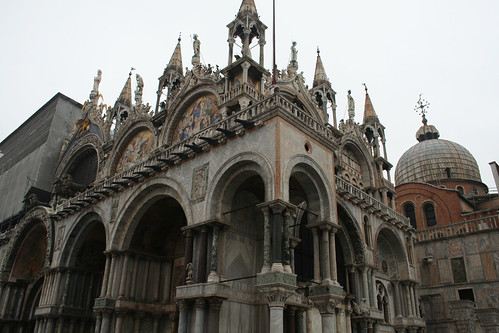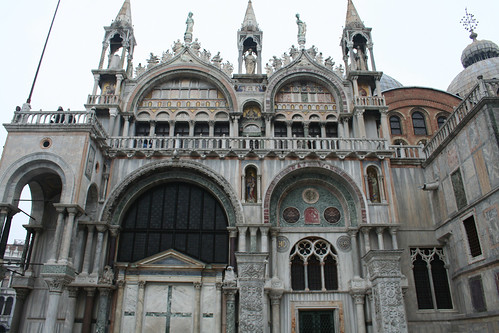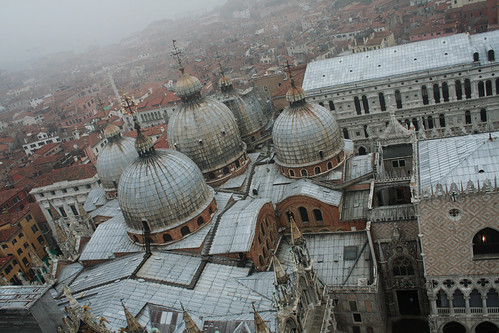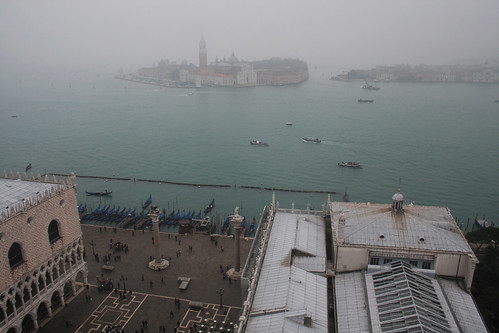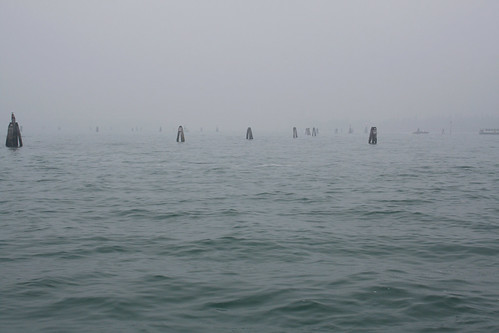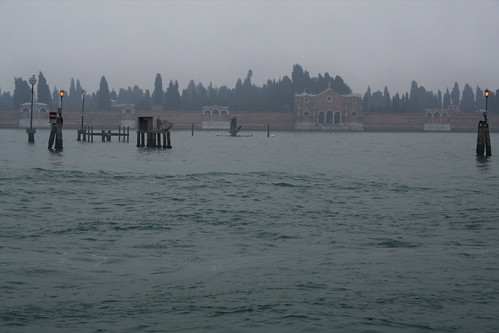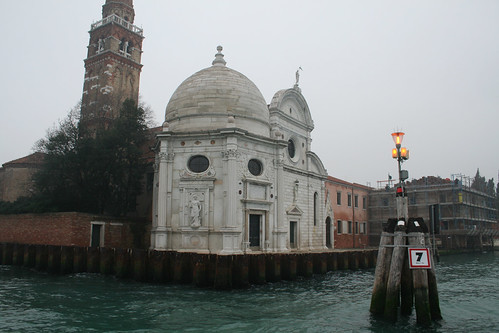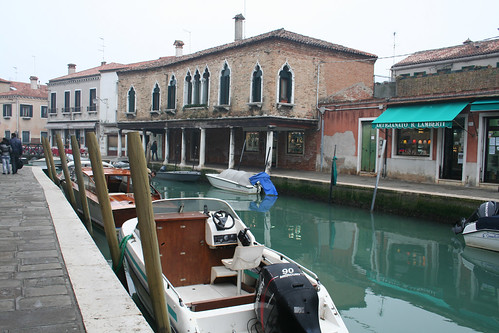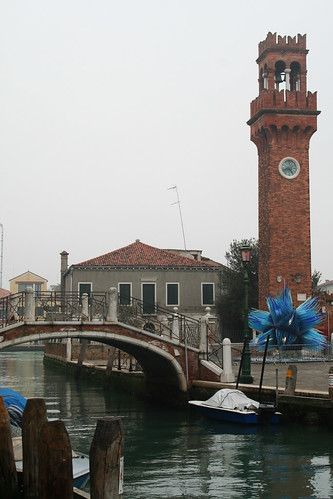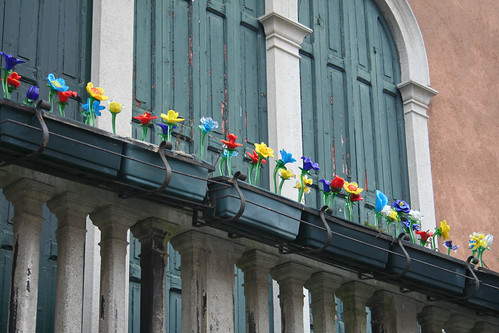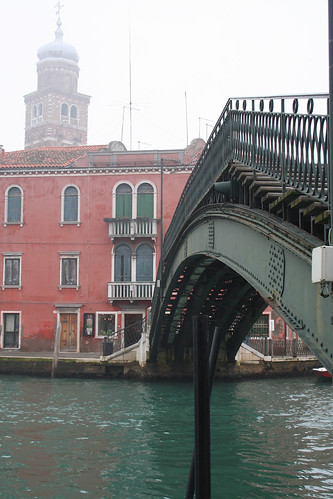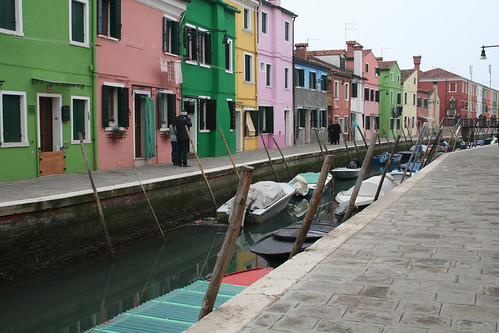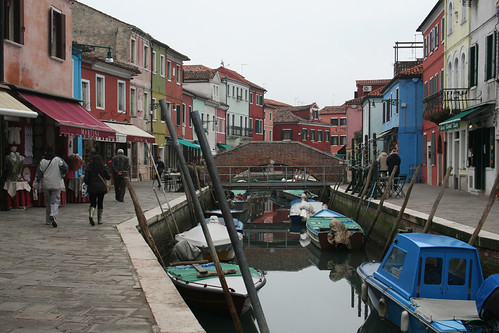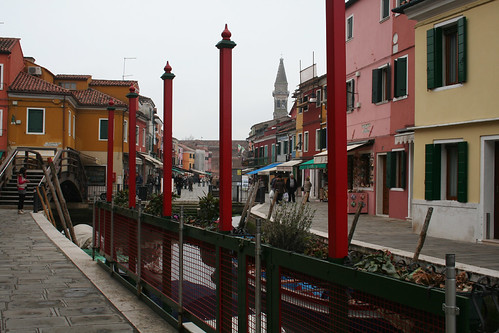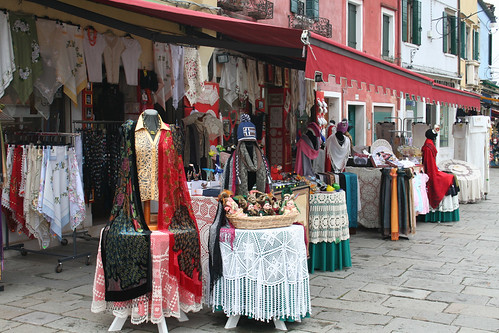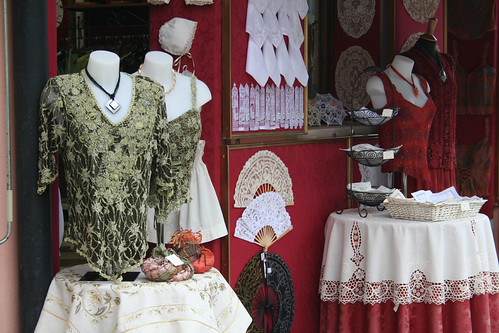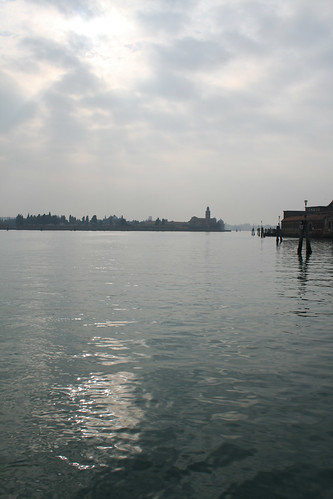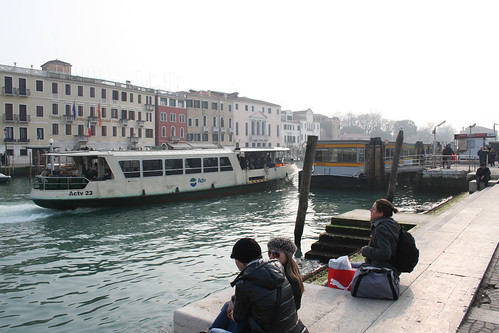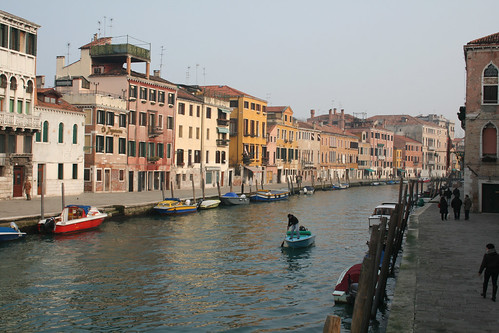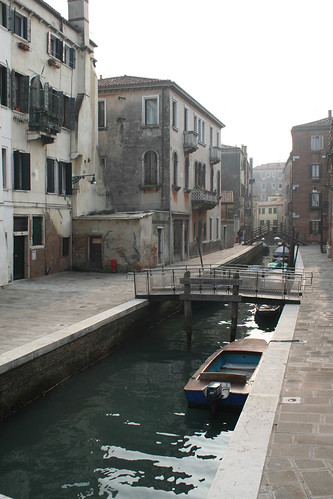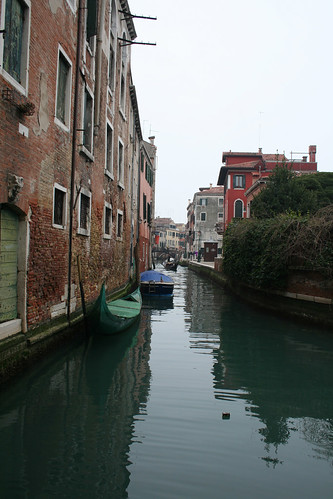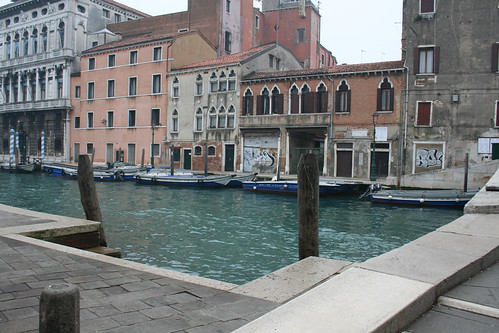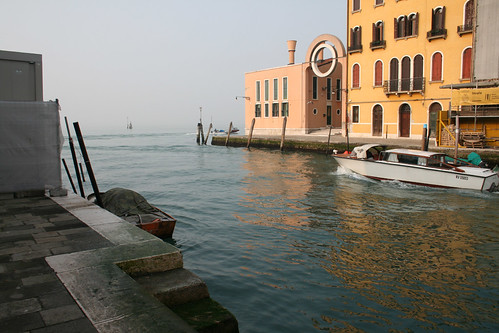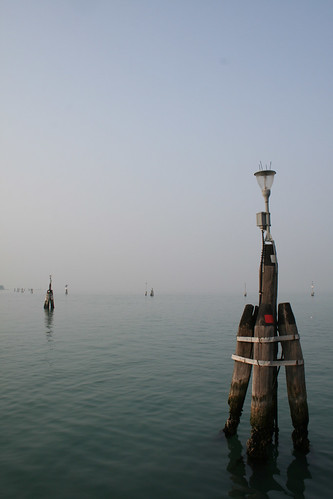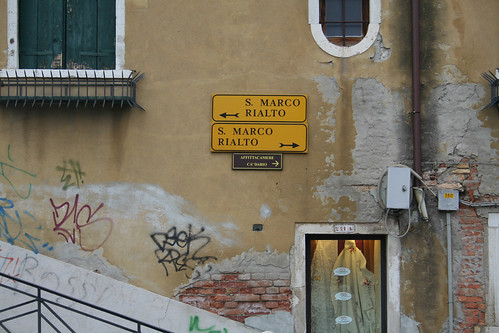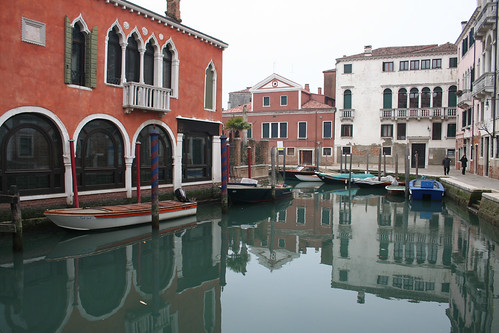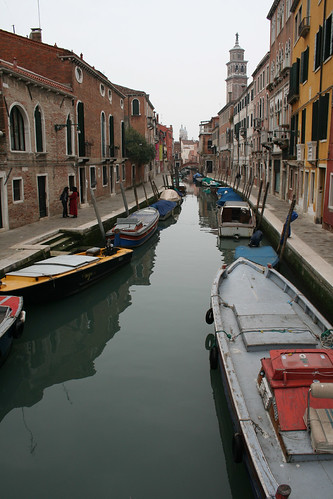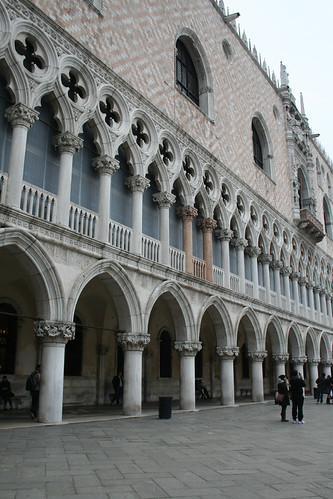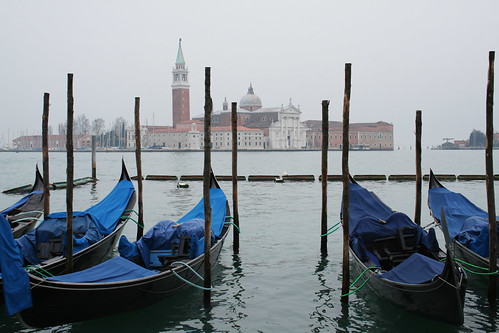I mentioned previously that Friday the 18th involved a trip to a very special museum. I'm sure you all have been dying to find out what it was (well, except for some of you clever people who've figured out how to view my Flickr photostream).
To get to the museum, from Bologna, you can either take a bus for an hour, or you can take a train for a half-hour and a bus for ten minutes and hope that the bus-train schedules match up efficiently. (I did the latter, and realized the next day that the bus I could've taken stopped literally a ten-minute walk from my hotel.) The train drops you at a tiny station in the middle of the country, with fields as far as the eye can see. You walk along the one road away from the station to the center of the nearby town, which consists of a few stores around an old arch and a bus station; you catch a bus to the town of Sant'Agata Bolognese, which is literally a church and a few houses in the middle of nowhere. There is a road; on the road is a sign that points to Bologna in one direction and Modena in the other. You walk along the road towards Modena.
Fortunately, it's only a few minutes before your destination is within sight. It's pretty big; combine its size with the flags out front, and it's pretty hard to miss.
The museum itself is actually rather small, which isn't a surprise considering that the rest of the complex is the factories of Automobili Lamborghini.
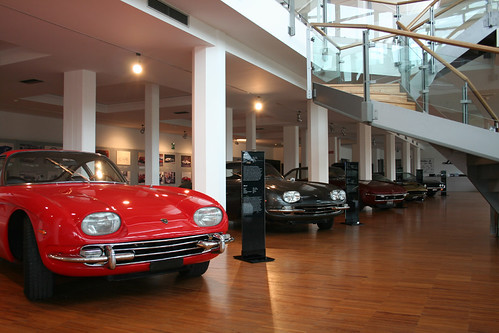
Museo Lamborghini contains a collection of the more noteworthy vehicles produced by the famous Italian automaker. The first floor is largely made up of older cars, including the first production model (the red 350GT, 1964) and examples of groundbreaking or beloved automobili from the company's first thirty or so years.

An early Miura (the P400S, 1968), for example, showcases both the beginnings of the classic Lambo look and the innovative thinking that has made Lamborghini successful.
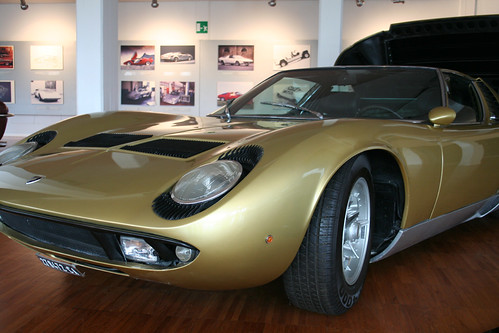
The lower floor is arranged in chronological order, so as you walk around it, you can see how the models changed over time, both in aesthetic and in function. Each car has a plaque in Italian, English, and German that explains points of interest relating to its engineering, history, and power.
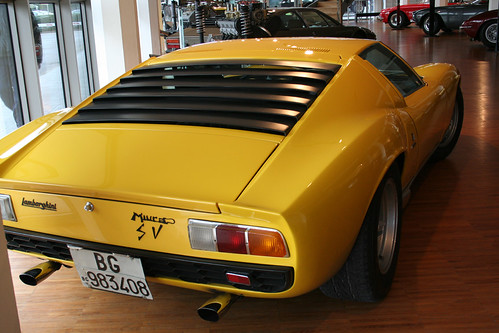
You can also look at parts of a disassembled engine.

Throughout the museum are a number of assembled engines as well. They are huge! I mean, logically, I know this, but it's really hard to appreciate what a five- or six-liter engine actually translates to in terms of real space until you have seen one up close.
The second floor of the museum houses more recent models - Diablos, Countachs, a car on the wall, some racing models, more engines...
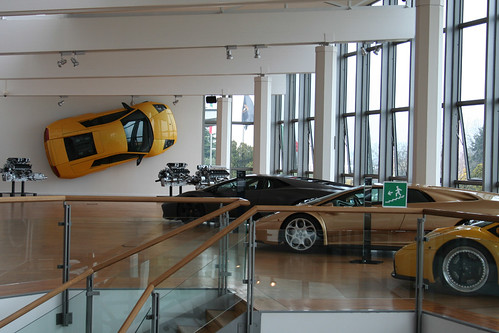
In 2004, Lamborghini donated a pair of Gallardos to the Bologna police.
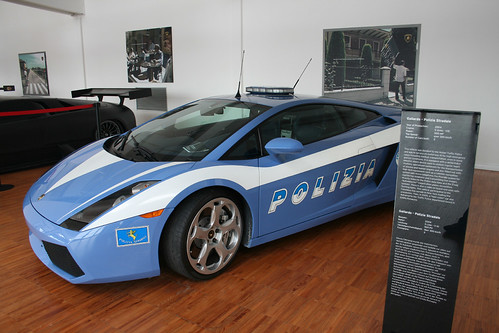
These cars are equipped with state-of-the-art radio communication, plus special compartments for transporting blood, fluids, and organs for transplant and transfusion. Considering that year's Gallardo's official top speed is in excess of 190 miles per hour, I'd say that they are being put to good use!
Oh, right, and there was a Murciélago mounted on the wall.
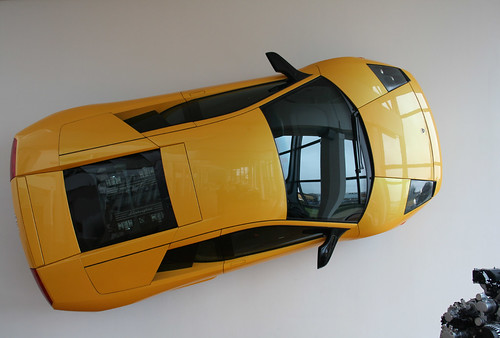
Further proof of my theory that the Lambo philosophy is as follows: "Why? Because we can."
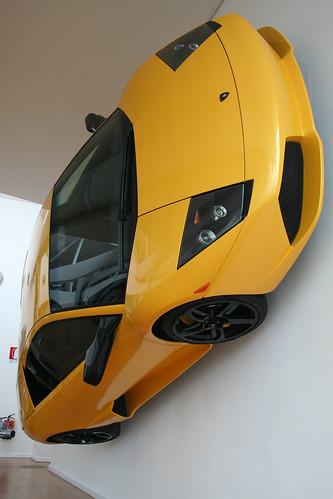
But let's step back for a moment.
Look back up to the first photo of the second floor and note the dark gray car in the background, behind the beige Diablo.
That is the Lamborghini Reventón, possibly my favorite vehicle in the universe. I find it remarkable not just for being one of the fastest street-legal cars in the world (over 210 miles per hour), but for a number of engineering features which you can bet I will tell you about at length shortly! It has the added bonus of not being as butt-ugly as some of the cars that could actually beat it in a race. As a matter of fact, I find this car pretty attractive.

The overall design was inspired by modern fighter jets; note the air intakes and the design of the wheels. I love the headlights (which have influenced those of the more recent Gallardos) and the angles of the body around the rear wheels.
The tail lights are distinct (if I spot a newer Lambo on the road, sometimes I recognize these before I recognize the body of the car itself), and every line on this car is aggressive.
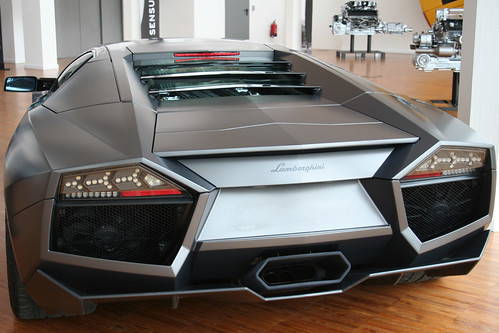
The chassis and the engine of the Reventón are the same as the Murciélago, but the exterior is new, lighter, made of a carbon fiber composite with a metallic green-gray matte finish. The instrument panel is entirely LCD, and can switch between two modes of display: traditional, and awesome--which is to say, made to resemble the panel of a high-tech fighter jet, including a G-force meter (note: I may have deviated slightly from official terminology).
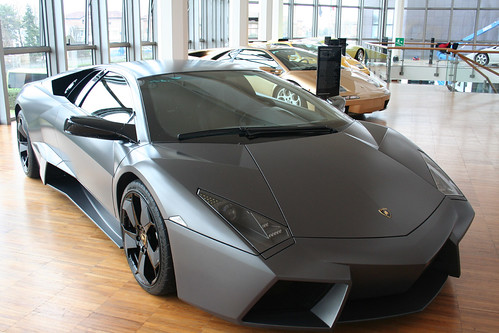
Okay, we can give other things some attention now.
A Diablo and a GT:
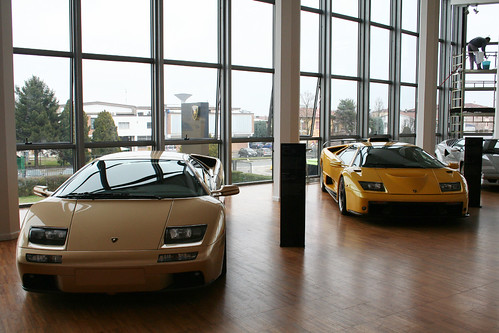
A series of photographs and concept sketches, presenting a history of Lamborghini from the 1960s and on:
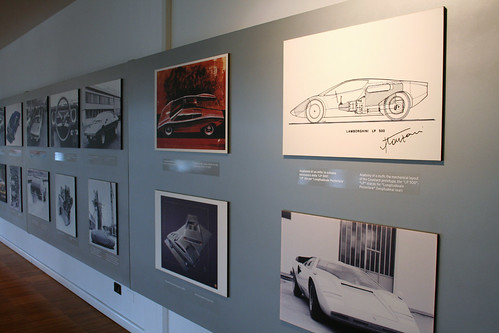
The 25th Anniversary Countach, made to celebrate the 25th anniversary of the company in 1988, and a Miura concept:
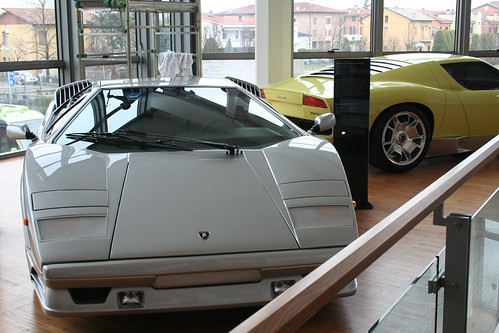
I admit to liking the Countach's general design philosophy, which seems to be, "does it look high-tech enough for you yet?". It actually has this appealing post-modern '80s retro look to it, albeit designed in the '70s. Marcello Gandini: time traveler? Or just that good?
Anyway.
I love the hub caps on the Diablo:
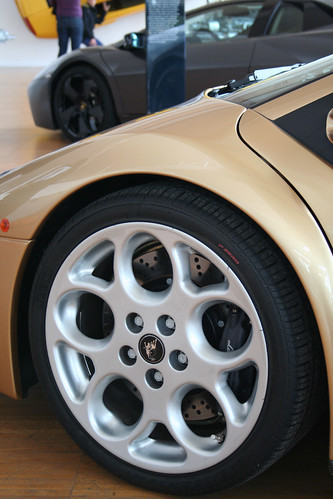
But not as much as I love those on the Reventón.
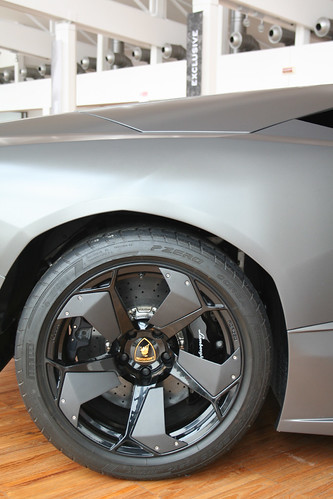
Why are they shaped like that? When it comes to Lamborghini, a fair answer in any situation would be "because it's badass!", but there is always more to it than that. In this case, the fanblade-shaped spokes actually help to channel air around the brakes and up towards the engine, thus cooling the whole system more efficiently at high speeds.
The Reventón is also the first Lambo to feature LED running lights, probably influenced by Audi.
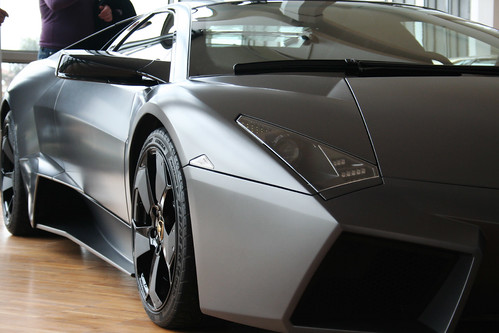
Only 21 Reventóns were produced - 20 for sale, and one more that you see right here. They were unveiled in 2007--and funnily enough, by the time that the general public knew of their existence, all 20 models had been sold.
Probably for the best, given the before-tax base price of one million euro, making it the second most expensive street-legal car in the world.
All right, all right, enough of this.

I went to the gift shop afterwards and bought a cute little model Reventón.
Next up: well, there's only one more post that I have planned, but it's about my last days in Florence, so I hope you will enjoy it.
Ciaociao!




